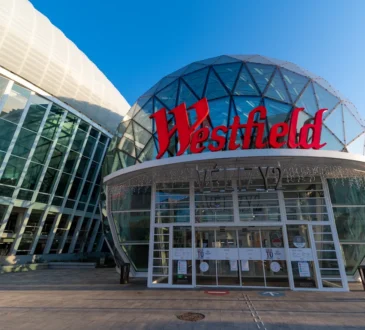
Britain’s ageing population is growing, but more care homes are closing than opening in the UK. That would seem to provide a compelling argument to invest in the sector, but institutional investors have largely steered clear.
Royal London Asset Management believes it has the £1B formula to change that.

Courtesy of Royal London Asset Management
RLAM’s Mark Evans says the REIT structure is key to expansion.
It has set out a £1B investment strategy and formed a nonlisted REIT focused on high-sustainability care home properties across the UK.
The move is part of RLAM’s bid to diversify its property portfolio and align investment strategy with demographic and social trends while staying true to its mutual ethos.
“We’re investing into sectors that we believe in, and we’re saying to third-party investors, ‘If you’d like to come along and invest alongside us with these strategies, we’d love to have you on the journey,’” RLAM Head of Property and Commercial Development Mark Evans said.
Royal London has already deployed around £350M across 25 homes in England, partnering with seven different operators. The group expects to invest up to £1B in total initially, targeting around £200M to £300M a year in new development investment.
Royal London formally established the REIT on 1 October as a platform to house its growing healthcare property portfolio. The move is designed to attract third-party capital and rebase capital gains from developer-held assets.
Some of the homes it buys might have been developed by operators that don’t have huge balance sheets, Evans said, but create them in special purpose vehicles, which then have a lot of capital gains sat within them. The REIT regime allows it to rebase that capital, essentially extinguishing that gain and thus the tax liability. It makes it more profitable to sell to the REIT.
The UK care home market for people 65 and older remains a relatively fragmented sector. As of December 2024, the size of the market in the UK was estimated at £26B, according to Grant Thornton. The independent sector accounts for 90% of that supply, with 78% for-profit organisations and 12% not-for-profit.
The 10 largest for-profit providers made up about 18% of the market and the small to medium provider segment 53% of total UK bed capacity, with the remaining 29% operators with one or two homes.
Cushman & Wakefield said that first-half investment volumes reached approximately £1.75B, up 108% on H1 2024 and marking two full years of rolling growth. U.S. capital has continued to dominate, accounting for 71% of activity, headlined by CareTrust REIT’s £640M acquisition of Care REIT. The period also saw a rise in midmarket deal flow as investors increasingly target Grade B and C stock, the agent added.
“If you look at the wider Royal London proposition, we have property as part of a wider offer for the ultimate pension customer, which slightly sets us apart,” Evans said.
“Quite a lot of that is commercial property — offices, retail, industrial and the like. What the healthcare part of the programme does is move us away from the risk around GDP and towards thinking about ageing populations and supply,” he added.
It is a shift that reflects long-term demographic realities and the growing demand among institutional investors for stable, socially aligned returns. And the UK’s care home sector faces an acute shortage of supply, Evans said.
From an investor’s perspective, healthcare property offers bondlike characteristics, and Evans said the REIT will own buildings typically with a 30-to-35-year lease and with rents connected with annual retail price inflation, similar to a fixed-income-type product.
Royal London’s model focuses on owning purpose-built, modern facilities rather than older conversions, predominantly because of its aligned focus on sustainability.
“Purpose-built fits our sustainable homes objective long-term,” he said. “But if we see some properties that have been built in, say, the last five or six years that meet our criteria, then absolutely, we would look at that. Will we be buying old Victorian mansions? Absolutely not.”

Courtesy of Royal London Asset Management/Henry Hunt
RLAM is focused on purpose-built and modern facilities.
Indeed, sustainability will play a central role in RLAM’s healthcare investment strategy, and many of the new homes it funds will include solar panels, ground-source heat pumps and battery storage. While such upgrades primarily benefit the operators, which pay the utility bills, Evans said these initiatives will strengthen the financial viability of the leases, helping safeguard the investment.
“If we’ve got a tenant who is less concerned about what’s happening in the utility market, it makes their rent more sustainable and more viable,” he said. “BREEAM hasn’t really been something that people are focused on in the care home sector today, but we’re starting to think about all those things as we go forward.”
The financial case for healthcare property, given the UK’s ageing demographics, is clear, and Evans said Royal London’s mutual structure has also influenced its choices.
“We want to do the right things around the UK where we can generate strong investment returns for our customers, which is of paramount importance, but that aligns to our mutuality,” he said.
That means investing across the UK — from Middlesbrough to Southampton, Norwich to Cardiff — with the goal of providing care where it is needed most. Royal London has an exclusive partnership with Shoreline Partners, its healthcare delivery partner, and works closely with operators to ensure resilience and quality.
Evans said bringing Shoreline in-house in June has helped align the investment and operational strategies in a way that working separately would not have facilitated.
“The operational side is a huge part. We absolutely look at the operators — how much agency staff they’re using, how many permanent staff, how often staff are turning over,” he said. “We need to understand how they are making their money and what the risks look like with them.”
After 2.5 years of steady deployment in the market, Royal London is ready to open the door to external investors, and Evans said establishing a track record and building the first tranche of the portfolio was an important initial step for the business.
“It’s always easier to talk to third-party investors when they can see what you’ve bought and they see the stock,” Evans said, although the group is not waiting for partners to make progress and said that RLAM will continue to invest while it searches for additional investment.
“We’re in the luxurious position that we have group capital that we can continue to deploy,” he said. “We’re focused on sectors that matter to people, that will endure and that reflect who we are as a mutual.”




